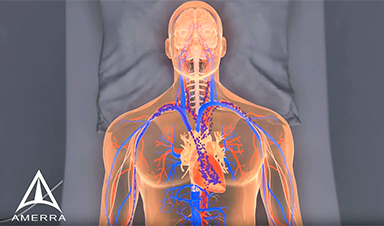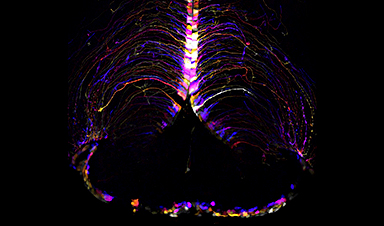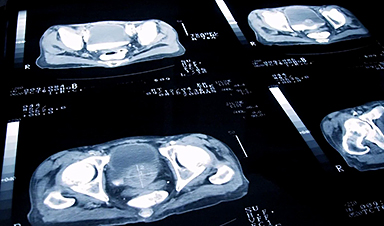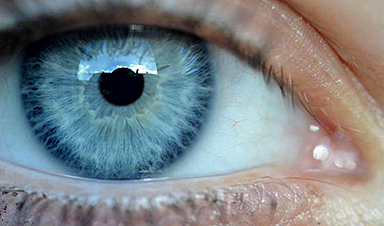
A small clinical trial using gold nanoparticles that act as tumor-seeking missiles on a mission to remove prostate cancer has begun at The University of Texas Health Science Center at Houston (UTHealth). It is the first trial of its kind in the world.
The nanoparticles, or nanoshells, are made of small layers of silica glass formed into a sphere and wrapped in a thin layer of gold. The shells seek out and saturate cancerous cells, and their advanced vibrational properties are then harnessed to cause the tumorous tissue to pulse with extreme temperature when light is applied through a laser specifically designed to excite the particles. The oscillation kills the cancer cells while preserving the healthy tissue, avoiding the nerves and urinary sphincter.
This procedure is the first in the world that is precise enough to potentially avoid negative ramifications like urinary incontinence or sexual impotency.
“This therapy could be life-changing for men diagnosed with prostate cancer and I’m honored to be among the first doctors the U.S. Food and Drug Administration approved to put it to the test,” said Steven Canfield, M.D., chair of the division of urology at McGovern Medical School at UTHealth, who recognized the possibility of the nanoparticles to treat prostate cancer and helped developed the trial to test the theory.
Prostate cancer begins when cells in a man’s prostate gland mutate and start to grow uncontrollably. Other than skin cancer, prostate is the most common cancer in American men, with an estimated 1 out of 9 men diagnosed. The American Cancer Society estimates 29,430 men died from the disease in 2018 alone.
Treatment options have traditionally included radical prostatectomy, which is the removal of the prostate gland and some of the tissue around it, radiation therapy and cryotherapy, among others. These methods carry the potential to have a negative impact on urinary function and sexual performance.
“The side effects of current prostate cancer treatments can be extremely traumatic. This new technology holds the potential to eliminate those life-altering effects, while still removing the cancer tissue and reducing hospital and recovery time,” Canfield said. “In fact, the first patient in the trial was actually riding a bike within a week of his treatment. The fusion of MRI and ultrasound imaging technology that we use to accurately identify and diagnose the cancer, combined with the extreme precision of the gold nanoshells in targeting the diseased cells, allows us to be incredibly accurate at obliterating them. I am excited as we continue tracking the progress of this groundbreaking improvement to prostate cancer care.”
Image Credit: Youtube
News This Week
Born Different? Cambridge Scientists Uncover Innate Sex Differences in Brains
Cambridge researchers found that sex differences in brain structure exist from birth, with males having more white matter and females more grey matter, highlighting early neurodiversity. Research from the Autism Research Centre at the University [...]
New study shows risk factors for dementia – virus causes deposits in the brain
Research into the causes of Alzheimer's is not yet complete. Now a new study shows that head trauma can activate herpes viruses and promote the disease. Frankfurt am Main – As a neurodegenerative disease, [...]
Are Machines Truly Thinking? Modern AI Systems Have Finally Achieved Turing’s Vision
Modern AI systems have fulfilled Turing’s vision of machines that learn and converse like humans, but challenges remain. A new paper highlights concerns about energy consumption and societal inequality while calling for more robust [...]
The Surprising Link Between Smell, Sound, and Emotions
New research reveals how smell and hearing interact in the brain to drive social behavior, using mouse maternal instincts as a model. Imagine you’re at a dinner party, but you can’t smell the food [...]
Brain cells age at different rates
As our body ages, not only joints, bones and muscles wear out, but also our nervous system. Nerve cells die, are no longer fully replaced, and the brain shrinks. "Aging is the most important risk factor [...]
Long COVID Breakthrough: Spike Proteins Persist in Brain for Years
Researchers have discovered that the SARS-CoV-2 spike protein persists in the brain and skull bone marrow for years after infection, potentially leading to chronic inflammation and neurodegenerative diseases. Researchers from Helmholtz Munich and Ludwig-Maximilians-Universität (LMU) have [...]
Water-Resistant Paper Could Revolutionize Packaging and Replace Plastic
A groundbreaking study showcases the creation of sustainable hydrophobic paper, enhanced by cellulose nanofibres and peptides, presenting a biodegradable alternative to petroleum-based materials, with potential uses in packaging and biomedical devices. Researchers aimed to [...]
NIH Scientists Discover Game-Changing Antibodies Against Malaria
Novel antibodies have the potential to pave the way for the next generation of malaria interventions. Researchers at the National Institutes of Health (NIH) have identified a novel class of antibodies that target a previously unexplored region [...]
Surprising Discovery: What If Some Cancer Genes Are Actually Protecting You?
A surprising discovery reveals that a gene previously thought to accelerate esophageal cancer actually helps protect against it initially. This pivotal study could lead to better prediction and prevention strategies tailored to individual genetic [...]
The Cancer Test That Exposes What Conventional Scans Miss
Researchers at UCLA have unveiled startling findings using PSMA-PET imaging that reveal nearly half of patients diagnosed with high-risk prostate cancer might actually have metastases missed by traditional imaging methods. This revelation could profoundly affect future [...]
Pupil size in sleep reveals how memories are processed
Cornell University researchers have found that the pupil is key to understanding how, and when, the brain forms strong, long-lasting memories. By studying mice equipped with brain electrodes and tiny eye-tracking cameras, the researchers [...]
Stanford’s Vaccine Breakthrough Boosts Flu Protection Like Never Before
Stanford Medicine researchers have developed a new method for influenza vaccination that encourages a robust immune response to all four common flu subtypes, potentially increasing the vaccine’s efficacy. In laboratory tests using human tonsil [...]
Water’s Worst Nightmare: The Rise of Superhydrophobic Materials
New materials with near-perfect water repellency offer potential for self-cleaning surfaces in cars and buildings. Scientists from Karlsruhe Institute of Technology (KIT) and the Indian Institute of Technology Guwahati (IITG) have developed a surface [...]
Japanese dentists test drug to help people with missing teeth regrow new ones
Japanese dentists are testing a groundbreaking drug that could enable people with missing teeth to grow new ones, reducing the need for dentures and implants, AFP recently reported. Katsu Takahashi, head of oral surgery at [...]
An AI system has reached human level on a test for ‘general intelligence’
A new artificial intelligence (AI) model has just achieved human-level results on a test designed to measure "general intelligence." On December 20, OpenAI's o3 system scored 85% on the ARC-AGI benchmark, well above the previous AI best [...]
According to Researchers, Your Breathing Patterns Could Hold the Key to Better Memory
Breathing synchronizes brain waves that support memory consolidation. A new study from Northwestern Medicine reports that, much like a conductor harmonizes various instruments in an orchestra to create a symphony, breathing synchronizes hippocampal brain waves to [...]























Leave A Comment